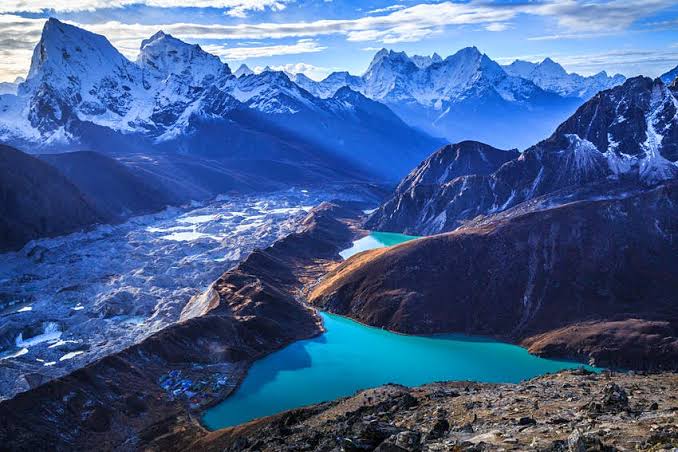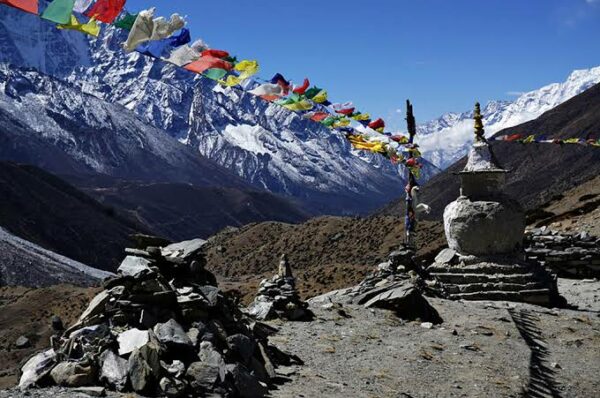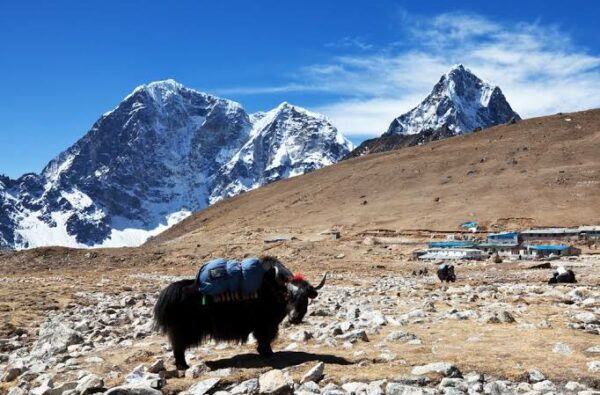
The Himalayans have always been of strategic importance for India. Whether it is about ecology, environment, security, geopolitics, et cetera Himalayas, have always made its significance felt. The Himalayas are always seen as a security blanket, saving us from harsh weather conditions, rivalry, fear, war, invaders, and, nowadays, Chinese incursions.
During colonial times, the Himalayas was seen as an entity saving us from issues of Russia; now, it is seen as an entity Protecting us from China and Pakistan. The Himalayan vision of India needs a change; the Delhi Beijing Islamabad triad defines our concern for the Himalayas. If the neighborhood was secure and the friendly Himalayas would be long forgotten. But there is a lot more to the Himalayas than just geopolitics and security.
It has diverse flora and fauna and immense ecological importance. The Himalayas are the youngest fold mountains of the world that reside on fragile tectonic plates making the Indian Himalayan Region earthquake-prone. It needs a specific strategy, vision, and attention for holistic conservation. Recently the government of India launched the National Mission on Himalayan Studies NMHS under the Ministry of Environment, Forest, and climate change to do the same.
What is National Mission on Himalayan Studies NMHS?
NMHS calls for developing new paradigms and vision so that ecological conservation and sustainable development of the Indian Himalayan Region is achieved. Simultaneously the mission will also try to improve the quality of life of local communities and the ecosystem health of the region. The ministry will support demand-driven research with technical innovation in different areas. NMHS is in line with the 2006 national environment policy launched by the government of India.
The local communities will be taught to make the best use of available natural resources to increase their participation in the conservation strategy. The vision and mission of the Himalayan studies are to launch innovative studies and related knowledge interventions to improve sustenance and enhance cultural, natural, and ecological aspects of the Indian Himalayan Region.
The strategy of NMHS will involve improving the livelihoods of local communities while following the vision of ecological conservation. The mission will try to introduce livelihoods and employments opportunities that involve the protection of resources rather than degradation of the environment. The mission will revive and rebuild traditional knowledge and practices, providing it with exposure and innovative ideas. An example of a traditional knowledge practice is the Himalayan healing system. 
The approach followed by the mission will be to support demand-driven research and technological inventions. It will also set up institutes for strength and capacity building. The mission will coordinate policies that will be based on experiences and best practices in the region. Such synchronization will attract multi-stakeholders to protect the Himalayan ecosystem and develop the local communities. These measures will ensure the ecological security of the country. There will be small grants which will target action-oriented researches.
These researches will be given 50 lakhs each. Stand-alone projects that lack outreach and funds will be provided with 500 lakhs each. Few projects which provide feasible ideas, doable targets, and are achievable will be given a 500 lakhs grant. The ministry also offered a Himalayan research fellowship scheme attracting conservation enthusiasts.
The Indian Himalayan region universities and institutions will participate in the fellowship scheme. This fellowship scheme aims to build a cadre of ecologists, social economics, and environmental managers to foster Himalayan development. The cadre will also generate ideas and information on biological, physical, social, and managerial aspects of the Indian Himalayan region.
The ministry will also organize seminars, outreach and awareness programs, events, conferences, symposia, colloquium, workshops, and conferences, et cetera. The target area will be the Indian Himalayas region which covers 530,000 km Square. 4% of the Indian population lives in the Indian Himalayan region; it has immense diversity in ethnic groups which live in remote and inhospitable terrains.
It has 171 out of 573 Scheduled Tribes in India. The target area includes ten Himalayan states that are Arunachal Pradesh, Himachal Pradesh, Jammu and Kashmir, Meghalaya, Mizoram, Sikkim, Nagaland, Tripura, Manipur, Uttarakhand, Assam, and West Bengal. The vision has six broad themes like sustainable management of land and water resources, conservation and sustainable use of power diversity, sustainable energy security and infrastructure, alternate livelihood options, capacity building and increasing awareness, environmental management, and assessment.
The NMHS will create bodies with scientific and traditional knowledge, build a cadre of practitioners who provide solutions to problems within the target area and prove a viable, implementable solution to the problem which can be used elsewhere. To foster Himalayan studies and conservation of whopping amount of 67.10 crores have been provisioned.
Understand the Himalayas holistically-
The Himalayas are a lot more than a geopolitical and security instrument for India. The Himalayan region is always co-jointly used with sovereignty, territorial, Jammu, Kashmir issues, human trafficking, migration, human rights exploitation, transnational crimes, poor terrain and roads, et cetera. Whenever we hear about the Himalayas, we imagine Hindu Muslim issues in Jammu and Kashmir, mass killings of Kashmiri Pandits, exodus day, terrorism, separatist movements, Pak occupied Kashmir, article 370, landslides, cloudburst et cetera.
But if we expand our vision, the Himalayas are much more than that. There is anthropology, history, culture, language, and ecology. The National Mission on Himalayan studies proves the changing vision of the Indian government towards the mountain region. The Himalayan region is a lot more than safety; it has history, cultural importance, and ecological diversity. It’s a fact that the Himalayas are one of the most prominent bio diversity hotspots of the world and possibly largest in Asia.
It has linguistic and cultural diversity, historical lineage of civilizations and cultures which need to be tapped. The traditional healing system practiced in the Himalayan region can be a game-changer if innovative research backed by data and experiments comes forward. Advancement in the conventional Himalayan healing system can allow India to be a global leader in alternate medication and therapy. India has always believed in power and healing capacity of Ayurveda.
Alternate medicine is the home turf for Indian civilization. India promotes Ayurveda and Ayurveda-inspired lifestyle via Ayush. Himalayan healing system will be another feather in the cap. India’s strategy to improve the livelihood of local communities and conserve the environment and ecology simultaneously is unique. It is different because the strategy asks the local communities to engage in livelihood, rejuvenating and restoring the resources rather than degradation.
If the researchers, fellowship programs, strategies make a breakthrough in developing alternate employment opportunities that save the environment, the world will be in awe of India. Environmental activists, environmental theorists, ecologists, scientists, and island nations are vigorously working towards reducing carbon footprint and rising global temperature. The average increase in water level by melting the glacier will affect atoll nations like the Maldives.
There are chances that the Maldives will disappear in the coming century. If alternate livelihood that preserves the environment is invented, India can help the world turn the global warming clock back to preindustrial revolution levels. This idea may sound rhetoric, highly ambitious, and futuristic to some, but it is a possibility for sure. This new approach and vision will create a Himalayan history that will develop, conserve the Himalayas holistically.
 It is a breath of fresh air in the world where ideas like trade, commerce, security, and community dominate. Himalayan studies will ensure that ideas like conservation, community development, cultural expansion, linguistic restoration, environment, ecological conservation, researching ancient knowledge, etc become mainstream subjects. It’s a great window of opportunity for the Indian civilization to be world leaders.
It is a breath of fresh air in the world where ideas like trade, commerce, security, and community dominate. Himalayan studies will ensure that ideas like conservation, community development, cultural expansion, linguistic restoration, environment, ecological conservation, researching ancient knowledge, etc become mainstream subjects. It’s a great window of opportunity for the Indian civilization to be world leaders.




